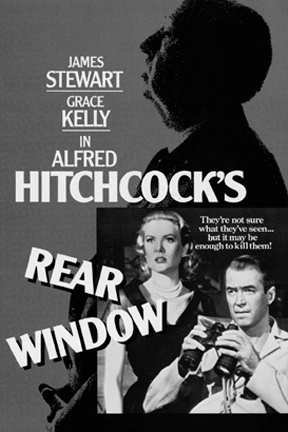(SPOILERS) The ending scene of Martin Scorsese’s Taxi Driver (1976) is one of the most hotly contested sequences in cinema. A great many people interpret the conclusion as a literal reality: Travis Bickle survives, is lauded as a hero by the media and regains the respect of his love interest. As the story goes, this is a sardonic critique of the notion of “hero worship” and the ability of the press to turn murderers into saints. I’ve heard tell that some also consider the finale to be an iteration of the Scorsesean theme of urban randomness. I find these interpretations lacking.
For one, the concluding sequence does not make logical sense if taken literally. If by some miracle of modern science Travis managed to survive being shot at point blank range in his neck, he would either be locked in a jail cell or a sanatorium; one cannot simply murder three people and face no legal inquisition. The three police officers standing in the doorway see Travis take responsibility for the events when he mimics pulling a trigger against his head! Even if we play devil’s advocate and accept that somehow a 12 year old girl managed to convince both the entirety of the NYPD and the district attorney that Bickle was acting in self-defense (unlikely given the glops of blood left on the sidewalk from a wounded Sport walking to the other building and the damning suicide note Travis left on his kitchen table…), there still remains the problem that Travis just tried to assassinate a presidential candidate in Columbus Circle… With his face being plastered all over the cover of the New York Times, every FBI agent east of the Mississippi would be converging on Travis’ apartment like pigeons on breadcrumbs in Central Park. There’s simply no way that Bickle could escape this nightmare unharmed and be driving a taxi on the other side.
Having hopefully poked enough holes in the literal interpretation to discredit it, I move on to my interpretation: everything that happens after the shootings is a dying hallucination. This seemed apparent to me on the first viewing, given Scorsese’s choice of camera angle on the withdrawal from the building. The shot points directly down at the ground from quite a high perspective, slowly pulling further and further away from the crime scene, eventually fusing into the disputed final sequence. This directorial choice seems to me to simulate the beginning of Bickle drifting off into the twilight of his death, the slow pan into a morbid dream.
As for the dream sequence itself, everything that transpires fits far too well into Travis’ ideal to effectively gel with a movie about a psychopathic vigilante. Essentially, you could cut this sequence and paste it at the end of the final scene of Breaking Bad. It’s that corny. What does a lowly, bitter creature fantasize about more than fame and glory? For the entire movie, everything occurs in a manner opposed to Travis’ desires: Betsy leaves him, Iris won’t leave with him, he can’t pull out his gun quite quickly enough, etc. etc. Travis never gets his way. That’s the whole point. It seems to make little sense to significantly alter the thematic message of the film in the last five minutes.
It seems hard to forget that Travis is the epitome of an unreliable narrator. Bickle is a mentally ill insomniac starved for attention, living on a steady diet of alcohol and junk food, fueled by coffee and unmarked pills. Why should we believe anything he depicts as being factual?
Go back and listen to Iris’ father reading aloud the letter he supposedly wrote to Travis: the staggered meter of the delivery almost perfectly resembles the pacing of Travis’ stuttered internal monologue. It’s also fitting that we never see the father on screen; he is merely a written creation, just like the persona Travis adopts when writing to his parents. Mr. Steensma can’t afford to come to New York and Travis can’t disclose his address to his parents. If Bickle were ever physically confronted with either party, his psychotic worldview would crumble. Keeping his admirers at arm’s length allows him to continue the fantasy that such admirers even exist to begin with.
I will take my interpretation one step further: Travis hallucinates his entire relationship with Betsy. When we are first introduced to Betsy at the campaign headquarters, we observe a bizarre conversation between the woman and her coworker; the dialogue is sterile, awkward, robotic. Suddenly, in an acute manner, we see Betsy identify the voyeur in the taxi cab. What explains the discomfort of this scene?
I posit that the conversation is a creation of Travis’ imagination; the entire scene is merely a fantasy wherein Bickle dubs over a muted interaction viewed from his visual perspective. I find the most compelling support of this interpretation to be Betsy’s rapid head turn: Bickle overemphasizes the drama of the moment in the visual because he knows he has been caught and is thus on high alert. From Travis’ perspective, Betsy reacts as suddenly as a guard dog to a midnight knock. Bickle fills the silence of the conversation with what he imagines people would be discussing in a campaign office, similar to the way that television’s Dexter meanders through life attempting to mirror the behavior of people he simply doesn’t understand.
Throughout the entire movie, but particularly at the finale, Betsy has a slight aura surrounding her that makes her appear fictionalized. We never see Betsy unless Travis is within eyesight and her feelings for him mimic his feelings about himself and the state of the world. At first, Travis’ self-esteem is very high and he views himself as a righteous, conscientious objector to the grime of his surroundings; Betsy views him as charming and charismatic, unlike anyone whom she has ever met. In the middle, Travis begins to detest himself for delving into what he sees as the moral vacuity of New York’s seedy underbelly; Besty leaves Travis for taking her to a pornographic movie. Bickle uses the created Besty persona as a masochistic tool for self-flagellation. At the end, Travis, dying, views himself as a redeemed hero, having rescued an endangered girl from a child prostitution ring; Betsy has regained respect for him, but Travis drives off proud, leaving Besty behind as he enters his eternal peace.
He has no use for her anymore.
Rating: 97/100.


